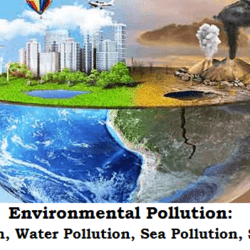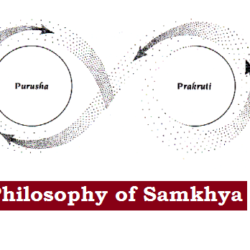
Social Control
Social Control refers to enforcing the values and patterns of the society in the unruly and undisciplined members.
Various means of social control are used for maintaining order and stability in the society. Social control can also be exercised in form of reward and punishment, it means rewarding for doing good and punishing for offense.
Forms of Social Control:
- Formal: codified and systematic like laws, rules, etc
- Informal: uncodified and unofficial like family, religion, kinship including gestures- sanction, criticism, laughter, etc
- Direct: controls in direct way; family, school, etc
- Indirect: law, code of conduct, etc
Agencies of Social Control:
- Traditions and Customs:
- Customary rules play upon the individual from childhood and different habits grow.
- Customs and traditions are group accepted techniques of control that have become well established and taken from granted.
- They are very effective among traditional and less educated people.
- Laws:
- In modern times, customs tend to lose their hold and therefore, laws are enacted by the states to control citizens.
- They are in fact, codified customs and mores of the society.
- Laws are general conditions of human activities prescribed by state.
- Education:
- It imparts knowledge and skills like discipline, cooperation, etc in a child.
- It teaches the child to understand his role in society, to cultivate social relationships, and then follow his social responsibilities after being adult.
- Family:
- It is the first socialization agency for a child.
- It socializes the child into the norms, values, and customs of the community and society.
- Religion:
- It reinforces social norms such as appropriate action, behavior and even thought process.
- Through festivals, it inculcates values and customs in the people.
Characteristics of Social Control:
- It’s a continuous process and works directly or indirectly every time ensuring social stability.
- It is the basic mean of social solidarity and conformity rather than deviance.
- The influence of social control is essentially exerted by the society or community.
- It can be conscious (developed in the forms of laws, etc) and unconscious (traditions like respecting elders, etc) as well.
- It can be exploitative for enforcing majority views in the forms of punishment, censorship and reprisal, etc.
Social Change
It can be defined as the changes in the society that are significant– have a big impact spread over a large sector of society.
Characteristics of Social change:
- Social change is universal and continuous; found in all societies.
- Changes can be slow (called ‘Evolution’) or quick (called ‘Revolution’). e.g. Adaptation is an evolution while 1857 Struggle was a revolution.
- Changes in ideas, values and beliefs may also lead to social change.
Factors of Social Change:
- Environment:
- Nature, ecology and physical environment influence society. For example life in deserts, coastal areas or mountains is different.
- Environmental catastrophic events sometimes lead to a total transformation of society.
- It can be constructive as well. For example discovery of oil in the Gulf countries had major effect on the society in the Gulf.
- Technology:
- Technology helps to adapt to natural factors. E.g. Industrial Revolution changed the urban life drastically.
- Sometimes the social impacts become visible only retrospectively. For example, discovery of gun powder in China was visible only after being used in World War I.
- Economy:
- Economic factors influence social setup and fabric.
- New industries or plantation agriculture produced exploitation in the form of slaves, bonded labour, child labour, etc.
- Economic rules in custom and tariff can affect life and occupation of many related with the activity.
- Polity:
- Political setup of the country influences the lives and their rights.
- In traditional states, the action of kings, wars, etc affected very much.
- Rise of nation states led to dominance of largest groups.
- Political rights with the backward groups led to the assertion of democratic rights.
- Culture:
- Changes in beliefs, ideas of religion and norms influence society. For example impact of Buddhism or Bhakti Movement changed the way society considers religion.
- Urbanization and globalization changed the life style and culture. For example dressing, food, shopping, mix-culture, etc.
Social Disorganization
Social Organization: It is the tendency within established social system that resists and regulates any change.
- Society must be able to reproduce itself overtime and maintain its stability, so it discourages change.
- Society is stratified and different strata are differently positioned with respect to command over economic resources, social status and political power; change may alter their position (vested interests).
Social Disorganization:
Emile Durkheim defined it as
“A state of disequilibrium and lack of social solidarity or consensus among the members of society”
Social organization provides the means by which a society maintains its unity and cohesion through effective control of its members and functions smoothly. Social disorganization causes weakening of solidarity, loss of control over its members and therefore conflict and disintegration.
Characteristics of Social Disorganization:
- Conflict of mores and institutions: new ideas arise and new institutions are formed, the existing mores come into conflict with new ones. For example, caste system is denounced in theory but casteism in politics promotes caste system.
- Transfer of functions from one group to other: functions once performed by family are transferred to nurses, schools, etc.
- Individualism: individuals take decision in accordance with their individual prejudice, interest and attitudes. E.g. young men and women on marriage occupation and life style
- Change in role and status of individuals: e.g. women working are discouraged.
Causes of Social Disorganization:
- Division of labour: when becomes excessive
- Violation of social rules: changes in social values come in conflict with old ones
- Industrialization: capitalism, class conflict, urbanization, etc
- Cultural lag: unequal rates of change in different parts of culture like inventions often end traditional arts
- Natural catastrophes and wars: calamities affect population and society
- Mal-adaptation of nature to culture: urbanization with competition which arises conflict, modern life style causes new diseases
Anomie
Anomie: Normlessness
If an individual (or group) goes against the socially accepted behaviour pattern, there can be an anomie situation.
According to Emile Durkheim, in an anomie situation following conditions exist:
- There can be a mismatch between wider social etiquette and that of individuals.
- It is created by the individual himself and not a natural condition.
- This can lead to suicide as well when an individual finds difficult to adjust to community values and ethics.
- Anomie Suicide occurs when an individual’s life style becomes unstable due to breakdown of social norms
According to Robert Merton, anomie arises when there is an acute disjunction between the cultural norms and individual capacities to act accordingly.
Alienation
Situation where there is less integration among the people and they do not feel connected to each other.
Marx’s Theory of Alienation:
When a person is engaged in the lower rungs of capitalist system, he is separated from the nature and other human beings, their work and self too.
For Marx the division of labour and class conflict brought about social stratification, which resulted in alienation. These for Marx were the crucial elements of modern society.
According to him, capitalism leads to four distinct ways of alienation:
- From their true inner self
- From other workers
- From production
- From the products
Features of Alienation: provided by Melvin Seeman
- Powerlessness (to shape their life)
- Meaninglessness (from things or works)
- Social isolation (no meaningful relationship)
- Self isolation (no interest)
- Normlessness
Causes of Alienation:
- Capitalist system
- Economic instability
- Social upheaval
- Cultural differences
- Demographic changes
- Political system
- Globalization no culture and traditions
Similarities between Anomie and Alienation:
- Anomie in the division of labour is alike that of alienation, deprived individuals of a sense of connection with society.
- Anomie defines a person’s self being within society and themselves, similarly, alienation defines the relationship of a worker with his productive role and with society.
- Both are similar in terms of isolation and disorientation of individuals however in different forms. Alienation is isolation of a person from their economic status quo, and anomie is isolation of a human being from their social status quo and personal norms.
- Though both are classical concepts, it can be said that Alienation for Marx and Anomie for Durkheim were metaphors for a radical attack on the dominant institutions and values of industrial society’.
- From this they take on similar issues, but in different perspectives; For Marx the division of labour and class conflict brought about social stratification, which resulted in alienation. Durkheim’s emphasis of modern society was on the norms, values and belief systems that governed it.
Dissimilarities between Anomie and Alienation:
- In Marx’s alienation there is exploitation of the working class by the Capitalists, which causes dysfunction. In Durkheim’s anomie, the dysfunction of the working class is not caused by exploitation by the Capitalists but by the complexity of the society.
- For Marx the division of labour and class conflict brought about social stratification, which resulted in alienation. Durkheim’s emphasis of modern society was on the norms, values and belief systems that governed it.
- Anomie is individualistic in nature related with an individual going against the norms of society. Alienation on the other hand is social in nature related with external factors responsible for exploitation of the working class.
Social Inequality
Patterns of unequal access to social resources are commonly called social inequality.
There are unequal opportunities and rewards for different social positions or statuses within the society. Inequalities are based on gender, race, skin colour, economic conditions, etc.
Social resources can be divided into three forms of capital:
- Economic capital in the form of material assets and income;
- Cultural capital such as educational qualifications and status;
- Social capital in the form of networks of contacts and social associations
Manifestation of Social Inequality:
- Social stratification: Sociologists use the term social stratification to refer to a system by which categories of people in a society are ranked in a hierarchy.
- It refers to the existence of structured inequalities between groups in the society, based on socioeconomic factors like wealth, income, race, education, gender, occupation, and social status, or derived power (social and political).
- It is made up of human actions and relationship and their repetition over years to form institutions.
- Prejudices: refers to pre-conceived opinions or attitudes held by members of one group towards another.
- A prejudiced person’s preconceived views are often based on hearsay rather than on direct evidence, and are resistant to change even in the face of new information.
- Stereotypes: a generalized belief about a particular group of people that is shared by many but is generally based on prejudice.
- It will impact what people think about or expect from individuals within that social group.
- Stereotypes are often applied to ethnic and racial groups and to women.
- Discrimination: If prejudice describes attitudes and opinions, discrimination refers to actual behaviour towards another group or individual.
- Discrimination can be seen in practices that disqualify members of one group from opportunities open to others, as when a person is refused a job because of their gender or religion.
- Discrimination can be very hard to prove because it may not be open or explicitly stated.
- Social exclusion: it refers to ways in which individuals may become cut off from full involvement in the wider society. It can be political, economic, social and cultural.
- Social exclusion is not accidental but systematic– it is the result of structural features of society.
- It is important to note that social exclusion is involuntary– that is, exclusion is practiced regardless of the wishes of those who are excluded.

 Home
Home Syllabus
Syllabus Contact Us
Contact Us





